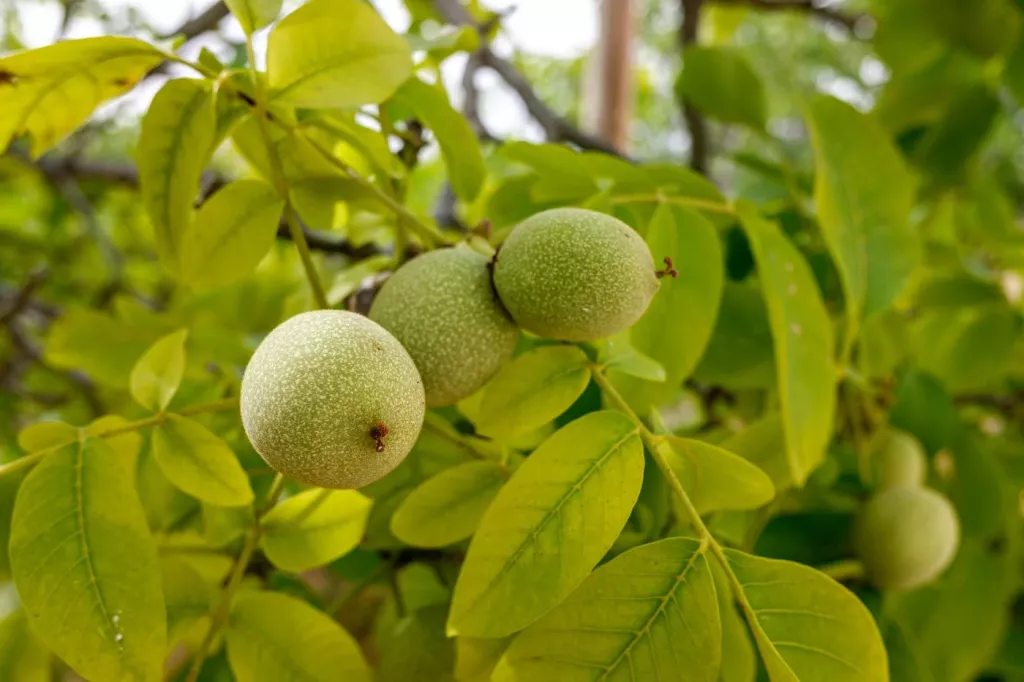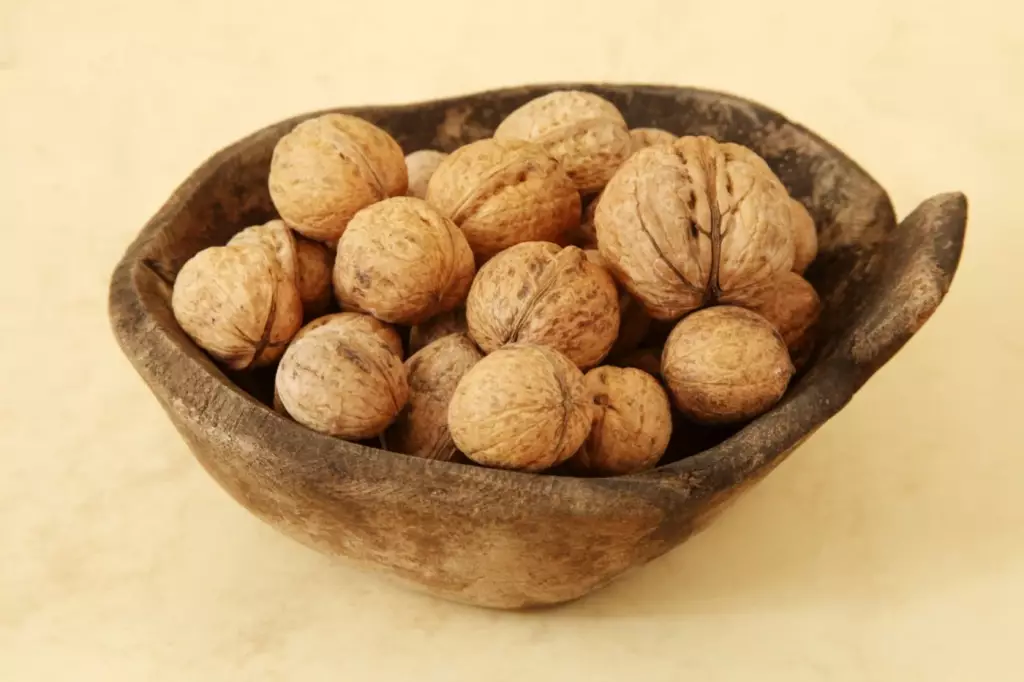Chandler Walnut: Profit Per Acre (Detailed 2023 Breakdown)
With the growing demand for walnuts and their numerous health benefits, it's no surprise that many farmers are choosing to invest in this profitable crop. This article aims to provide a detailed breakdown of the profits and costs associated with cultivating Chandler walnuts in 2023.
A mature Chandler walnut tree can generate profits of up to $4,000 a year. Chandler walnuts have a high yield and great kernel quality, making them a profitable cultivar. The estimated total cost per acre for crop production in 2023, which accounts for both land and non-land costs, will be $1,161.
A growing number of people are becoming more and more interested in Chandler walnuts because of their health advantages, adaptability in cooking, and rising demand as a source of plant-based protein. Because of this, market trends indicate a bright future for producers who invest in the Chandler walnut industry.
Understanding the profit per acre of Chandler walnuts is key to evaluating their potential financial return and incorporating this into your overall farming strategy, as you embark on starting your walnut farm from scratch.
Summary
- Carefully plan your setup, select the right land, and nurture your Chandler walnut trees on your farm.
- It may take 7–8 years for your walnut trees to reach maximum production of around 33 lbs per tree, or 4740–5512 lbs per acre.
- Closely monitor your water usage throughout the growing season and make necessary adjustments.
- Keep an eye on the market trends for the walnut industry to ensure you're receiving the best possible price for your produce.

On this page:
Overview of Chandler Walnut
Chandler walnuts are a popular and profitable variety for growers due to their high yield and excellent kernel quality. In this section, we'll provide you with an overview of the growth and yield of Chandler walnuts, as well as market trends affecting the profitability of this crop.
Strong growth and impressive yields of Chandler walnuts
The trees take some time to reach maximum production, but with optimal conditions, such as climate, irrigation, and proper management, you can save 2–3 years before reaching their full potential. An acre of mature Chandler walnut farmland can generate upwards of $4,000 per year for its owner, making it an attractive investment option.
When considering planting Chandler walnuts, it's essential to carefully plan and manage your orchard to ensure the highest possible yield. This includes selecting the right tree spacing, choosing a proper rootstock, providing adequate irrigation, and implementing pest management strategies.
Market trends for Chandler walnut

The demand for walnuts, particularly Chandler walnuts, has been on the rise globally due to their health benefits, versatility in recipes, and growing popularity as a plant-based protein source. As a result, market trends show a promising future for growers investing in Chandler walnut production.
In recent years, the export market for walnuts has expanded, especially in Asia. This growth in demand has led to an increase in the overall value of the walnut industry, making it even more profitable for growers like you. However, it's essential to stay informed of any economic factors or trade policies that may affect the export market in the future.
Keep in mind that market fluctuations and potential weather challenges can impact crop yields, making it crucial to develop a risk management strategy and diversify your farming investments to ensure long-term profitability when growing Chandler walnuts or any other crop.
Initial Investment for a Chandler Walnut Farm
| Initial Costs for a Chandler Walnut Farm | Estimated Costs per Item |
|---|---|
| Agricultural land | $1,000 to $10,000 per acre |
| Chandler walnut saplings | $15 and $40 per tree |
Land preparation to start your Chandler walnut farm
This involves tasks like clearing debris, plowing the soil, and setting up an irrigation system. These tasks can be labor-intensive and require investment in equipment, such as tractors and plows.
Considering the soil requirements for walnut trees, it's essential to test your soil's pH and fertility levels. Optimal walnut growth requires soil with a pH range of 6.0 to 7.0 and well-drained, fertile soil. You may need to invest in soil amendments to create the ideal environment for these trees.
Planting your Chandler walnut saplings
You'll need to purchase the saplings, which can cost between $15 and $40 per tree, depending on the supplier and the tree's age. It's crucial to plant them at the right spacing to ensure optimum growth and yield. Typical spacing recommendations are 24 to 30 feet apart, but this can vary depending on factors such as soil fertility and climate.
When planting your trees, pay attention to the proper depth and provide adequate support, such as tree stakes. It's essential to water the saplings immediately after planting and follow a consistent irrigation schedule to maintain optimal soil moisture levels during the critical establishment phase.
As your trees grow, pruning and training them become necessary to maintain a strong, healthy structure that supports a high walnut yield. Pruning tools and equipment may be added to your initial investment list.
Cost Associated with Growing Chandler Walnuts
| Costs of a Small Chandler Walnut Farm | Estimated Costs per Item |
|---|---|
| Equipment (tractors, harvesters, and irrigation systems) | $10,000 to $100,000 |
| Fencing | $1 to $10 per linear foot |
| Tools (pruning shears, ladders, and other hand tools) | $100 to $1000 |
| Facilities (barns or sheds) | $1,000 to $10,000 |
| Fertilizers | $100 to $1000 |
| Labor | $14 per hour |
Irrigation and water management for your Chandler walnut trees
An adequate supply of water directly impacts your yield and profits. Costs related to irrigation and water management include:
- Infrastructure setup: Drilling wells, installing pipelines, purchasing sprinklers, timers, and controllers.
- Maintenance: Periodic repairs, replacing broken or worn-out irrigation components.
- Water usage: Taking into account your local water rates, usage restrictions, and potential drought conditions.
Effective fertilization and pest control practices
It's vital to adequately nourish your trees while preventing harmful pests from damaging your crop. Expenses in this area include:
-
Fertilizers: Purchasing and applying the appropriate nutrients for your trees, considering the soil type, tree age, and growth stage.
-
Pesticides: Investing in effective pest control methods to minimize infestations, including selecting proper chemicals and application techniques.
-
Integrated Pest Management (IPM) practices: Employing a combination of cultural, biological, and chemical methods to maintain a healthy orchard.
Make sure to consult with local agri-experts for targeted advice to create an optimal fertilization and pest control program for your farm.
Labor expenses for your workforce
Labor costs encompass the wages and benefits for the personnel required to manage, maintain, and harvest your walnut trees. Key aspects to consider are:
-
Full-time or part-time employees: Hiring and retaining a skilled and reliable workforce, taking into account seasonal fluctuations in labor demands.
-
Machinery operation and maintenance: Ensuring the proper use and upkeep of farm equipment, such as tractors, harvesters, and sprayers.
-
Employee training and safety: Investing in ongoing education and safety workshops for your employees, promoting best practices in the field.
Keep in mind the local labor market, prevailing wages, and industry regulations when calculating your labor expenses and creating a fair and motivating work environment for your team.
Income and Revenue from Farming Chandler Walnuts

Product pricing of Chandler walnuts
You can expect your profits to be determined by a few critical factors, such as yield, price, and costs. The formula you should consider is quite simple:
- Yield × Price - Costs = Profits.
In order to maximize your revenue per acre, you should focus on the yield per acre in pounds and the walnut price per pound. Revenue per acre is calculated by multiplying the yield per acre by the walnut price.
Market demand for Chandler walnuts
The increasing demand for healthy, nutritious food options has made walnuts a sought-after commodity. This demand has led to the growth of California's walnut acreage, which has increased by 10% since 2017, reaching 440,000 acres in 2019. Chandler walnuts continue to be a popular choice for growers due to their quality and taste.
To stay competitive in the walnut market and maximize your income, it's crucial to build a strong relationship with your buyers and continuously evaluate market demand trends. Networking with industry partners, attending conferences, and researching the latest market insights will help you remain informed about the current and future demand for Chandler walnuts.

As you delve into the profitability of Chandler walnuts per acre, also explore the broader scope of growing Black Walnut trees for profit, to determine which type aligns best with your farm's financial and agricultural goals.
Profitability of a Chandler Walnut Farm
Net profit per acre of a Chandler walnut farm
The first step in calculating profits is to get the revenue per acre. This can be achieved by multiplying the yield per acre by the walnut price per pound.
In 2023, the projected total cost per acre for crop production, including non-land costs and land costs, will be $1,161. To estimate your net profit per acre, you simply need to subtract these costs from the revenue per acre.
For example:
Revenue per acre = Yield per Acre × Walnut Price per Pound
Revenue per acre = 1,500 pounds of nuts per acre × $2.45 per pound
Revenue per acre = $3,675Net Profit per Acre = Revenue per Acre − Total Costs per Acre
Net Profit per Acre = $3,675 − $1,161
Net Profit per Acre = $2,514Return on investment of a Chandler walnut farm
Your return on investment (ROI) is another crucial factor to consider, especially when comparing a walnut farm to other forms of investment. To calculate ROI, you'll need to divide your net profit per acre by your total investment per acre. An example of how to calculate ROI is shown below:
ROI = $2,514 ÷ $1,800
ROI = 1.39%
